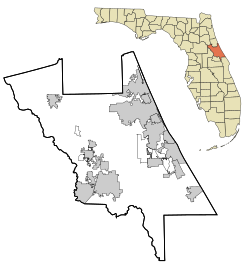This article lacks inline citations besides NRIS, a database which provides minimal and sometimes ambiguous information.(November 2013) |
The Ormond Hotel | |
Formerly listed on the U.S. National Register of Historic Places | |
 | |
| Location | Ormond Beach, Florida, United States |
|---|---|
| Coordinates | 29°17′20.59″N81°2′50.28″W / 29.2890528°N 81.0473000°W |
| Architect | George Penfield |
| NRHP reference No. | 80000964 [1] |
| Significant dates | |
| Added to NRHP | November 24, 1980 |
| Removed from NRHP | September 12, 2025 |
The Ormond Hotel (also known as The Flagler Hotel) was a historic hotel in Ormond Beach, Florida, United States. It was located at 15 East Granada Boulevard.

